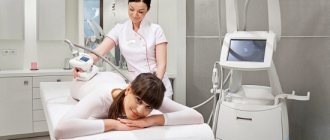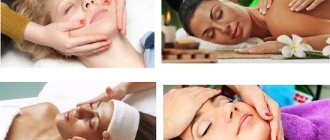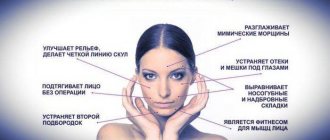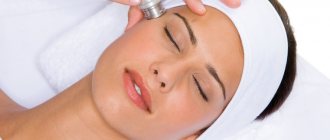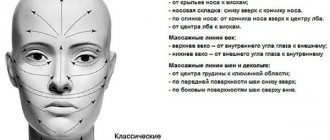Stress, overwork, physical and mental stress - constant companions of a person - often cause health problems. According to statistics, 80% of the world's population develop areas of excessive muscle tension in the body, which lead to a number of problems. Spasms are accompanied by severe pain, disruption of blood flow and metabolic processes in tissues, and limitation of motor functions. Fortunately, there is a good way to achieve complete relaxation of the fibers and eliminate painful symptoms.
This is myofascial massage - the latest therapeutic technique that came from America not long ago and has already become popular all over the world. Let's get to know her better.
Fascia and its functions
The word fascia is translated from Latin as “bandage”, “bandage” or “case”. In anatomy, fascia is a dense connective tissue that literally permeates the body, creating a sheath for muscles, enveloping internal organs, bones and nerve fibers. This is an important element of the structure of tendons, ligaments, and joints.
Considered an auxiliary tissue, fascia nevertheless performs important functions:
- Keeps internal structures, muscles, tendons, blood vessels and nerves in a clearly fixed position.
- Actively participate in metabolism.
- Separate organs from each other, limiting anatomical structures.
- Attach muscles to the bones of the skeleton.
- They control muscle volume and prevent their deformation due to their elasticity and stretchability.
- By contracting, they allow you to hold the body in an awkward position.
- They transmit energy impulses, moving muscles and bones.
- Accelerate the flow of blood and lymphatic fluid.
- They protect blood vessels and nerves passing through the thickness of muscle tissue.
Fascia has memory and is able to change its shape with constant repetition of the same movements.
It has been proven that the elasticity of fascial tissues largely depends on the emotional state of a person: internal clamps, stress and tension make these structures rigid, reduce their flexibility, which leads to poor posture and stiffness of movements.
Myofascial massage VS myofascial syndrome
Myofascial massage is successfully used in the treatment of myofascial syndrome. But in order to achieve maximum efficiency, you need to know a few things.
What is myofascial syndrome?
Any movement we make occurs due to muscle contraction following a command coming from the brain. If the nerve impulse becomes chaotic, the fibers of the muscle tissue will contract randomly. This leads to their spasm and the appearance of trigger points. Trigger points are small areas of spasmed muscle fibers. The appearance of trigger points means that myofascial syndrome has occurred.
How does myofascial syndrome manifest?
The main manifestation of myofascial syndrome is pain. It occurs under the influence of overload, hypothermia, lack of tissue nutrition, emotional stress and a number of other factors. First, these factors activate the trigger point, and then the trigger point automatically triggers spasm and pain in the entire muscle.
What happens in the tissues?
Spasm in the system of muscle and fascial fibers disrupts capillary and lymphatic circulation throughout the muscle. This leads to stagnation and swelling at the cellular level. This is followed by oxygen starvation, tissue ischemia and an increase in pain.
How does myofascial massage help?
Myofascial massage has a good preventive effect against ischemia and stagnation in the deep tissues of the body. In contrast, a regular massage can only worsen the situation and provoke an exacerbation of the pain syndrome.
How to achieve maximum effect from myofascial massage?
Myofascial massage, being a good preventive measure, does not have sufficient therapeutic power to develop a full therapeutic effect. If the goal is not prevention, but treatment of myofascial syndrome, then myofascial massage alone will clearly not be enough. In order not to “treat”, but to fully cure a person - to eliminate all the causes and manifestations of the disease - myofascial massage must be combined with other methods of soft manual therapy.
How is gentle manual therapy different from conventional manual therapy?
Gentle manual therapy is fundamentally different from conventional one. Firstly, it is much softer and safer, and secondly, it is significantly more effective than conventional manual therapy. This difference is especially noticeable in the results of treatment of myofascial pain syndrome. Already from the first session, patients feel the undeniable superiority of soft manual therapy over conventional one. And in combination with myofascial massage it gives truly amazing results.
Consequences of dysfunction
For various reasons, the structure and functions of the fascia can be disrupted, causing a lot of problems for a person.
Fascial tissue is often called the “sixth sense organ.” After all, free nerve endings, receptors responsible for pain and movement “sensors” are located here. Any disruption of the functioning of the “peripheral brain” can lead to sad results: we will stop coordinating any movement of the body in space and feel pain, which, as is known, is a signal warning of problems with the body.
One way to relieve back pain is to massage your lower back.
The principle of action and results of massage
It is known that fascial tissue is very sensitive and is capable of changing its structure in response to external influences. Therefore, special techniques of deep myofascial massage, during which not the muscles themselves are worked, but the connective tissue membrane surrounding them, will help restore lost functions and relieve a person from pain and discomfort. As a result of this procedure:
The technique of working with fascia allows you to increase the mobility of the spine and joints, corrects the figure, promoting weight loss, relieves inflammatory processes, improves the appearance and condition of the skin. Moreover, this massage directly affects the nervous system, balancing the processes of excitation and inhibition, improving sleep, and improving mood.
It is important to warn the patient that a temporary reaction to exposure may include local redness of the skin, muscle twitching, chills, nausea and increased urination. This is how the body rebuilds itself and reacts to changes caused by the massage therapist’s manipulations.
MYOLIFTING FACIAL MASSAGE™
13 REASONS TO LEARN “MYOLIFTING FACIAL MASSAGE™”
1. Training in Myolifting Facial Massage™ is an ideal opportunity for:
• Massage therapists – who want to charge more money for services and increase the number of regular clients. • Cosmetologists – who want to offer a new service by automatically increasing their income. • For beginners from scratch - who want to make good money doing useful, enjoyable and interesting things.
2. Myolifting facial massage™ is one of the most popular massage techniques, having mastered which you can earn from $700 per month (according to statistical surveys of specialists who have completed various trainings, as well as the number of facial massage trainings provided in the region).
3. Myolifting facial massage™ is a unique massage technique that is a symbiosis of Spanish, Italian and Austrian massage techniques.
4. Consists of six blocks, which are used depending on the expected result/task - you can perform either one block or all of them, like a constructor, thanks to this the massage can last from 10 minutes to 1.5 hours.
5. The technology is self-sufficient and does not require advanced training. There is nothing superfluous, only movements that give maximum results.
6. The work is comprehensive - with the face, neck, décolleté, arms to hands, shoulder girdle, back, creating a holistic approach.
7. One technique that solves all problems: relaxation, lymphatic drainage, lifting, ptosis, wrinkles. The skin becomes tighter, firmer and more elastic. The oval of the face is tightened. Puffiness is relieved. Wrinkles are smoothed out, including deep expression wrinkles. The complexion becomes healthy and even. Inflammation and rosacea go away. Deep relaxation and pleasure.
8. Three days of practice for 8 hours. In just three days you are guaranteed to receive a new profession and within 1-2 months there will be a flow of clients for your services.
9. Benefits for the massage therapist: Massage is not done on the strength of the hands, but on the strength of the whole body. Therefore, the massage therapist gets tired less than with any other technique. During the massage, the specialist feels how the tissues react to his movements and can choose the optimal intensity and strength of impact. You can work sitting or standing - as is convenient for you, without violating the client’s personal space.
10. Achievements of students: • 2nd place in the category “International New Generation” at the Italian Championship Massage Spa Talent 2020. • 1st place in the nomination “Cosmetology Massage” at the Eurasian Championship in Moldova 2020. • “Best cosmetic massage”, at the Ukrainian massage championship in 2010.
11. Myolifting facial massage will 100% increase client turnover, and accordingly your income.
12. Group of maximum 10-12 people, working on each other. Individual approach. The main task is to “put your hands on” and develop a technique; this is the basis for the successful work of a massage therapist, which is why the emphasis in training is on practice.
13. The training is conducted by teacher Denis Demidov (Founder and teacher of the international training center for holistic aesthetics of face and body “Denis Demidov traning-center”, “Denis Demidov online-school”), since 2007 he has trained more than 2315 cosmetologists and massage therapists in different countries.
A unique massage technique that is a symbiosis of various massage techniques
and consisting of six blocks:
- Connective tissue. Reflexological effects on connective tissue with tangential movements through the autonomic nervous system. Thereby:
-improving metabolism in tissues,
-stimulate the production of collagen and elastic fibers by fibroblasts, i.e. strengthen the skin,
- do lymphatic drainage,
– we restore trophism in case of problems of the trigeminal nerve, post-operative and post-stroke period,
– reduce the number of headaches of various types.
- Relaxing. Has a sedative effect on the central nervous system. The block has a dual purpose: spreading the massage product and relaxing the client.
- Lymphatic drainage. The block is performed according to the method of Emil Vodder, the founder of lymphatic drainage. Gives an anti-edematous effect and improves the functioning of the lymphatic system.
- Muscular. It works in three directions, taking into account age, stress and ptosis:
– muscle relaxation,
– muscle trophism,
– muscle toning.
The technique is based on deep local kneading, stimulating microcirculation processes, restoring the tone of the main muscle groups that form the muscular frame of the face, and as a result, a lifting result is obvious.
- Dermal . We tone the dermis, eliminate and reduce wrinkles.
- Periorbital. We work with the forehead and eye area (elimination of wrinkles, work with eyelids, drainage).
Peculiarity:
- The uniqueness of this technique is that it can be used in blocks, like a construction set, i.e. perform either one block or all six; you can combine blocks depending on the result you want to achieve. The massage can last from 10 minutes to 1.5 hours.
- Tangential movement is used to influence the mechanoreceptors of the skin.
- Emphasis is placed on the biomechanics of the specialist’s body (the entire body of the specialist works).
- Working with the client's comfort zone and not entering it.
- We learn to pay attention to how the tissues themselves “speak”, how best to work with them, with what intensity and at what depth.
- Work not only on the face, but also on the neck, décolleté, arms, including hands and back (without turning the client over). Those. facial massage is more holistic and is perceived better by the client than just a facial massage.
| Result: 1. Lifting, firmness, elasticity. 2. Elimination of ptosis. 3. Relieving swelling. 4. Relaxation, both muscular and psycho-emotional. 5. Elimination and reduction of wrinkles. 6. Correction of facial oval. 7. Eliminate nervous tics and relieve nervous tension. 8. Improving microcirculation and facial trophism. | Plan of the education: 1st day (from 10 to 18) Introduction. What you need to pay attention to when working with a client. How to choose a scheme for working with a client. Practicing special movements with the fingers (wave, fan, figure eight). 1st block: Connective tissue (practice). 2nd block: Relaxing (sedative) (practice). 3rd block: Lymphatic drainage (practice). 2nd day (from 10 to 18) 4th block: muscle 3rd day (from 10 to 17) 5th block: Dermal (practice) 6th block: Periorbital (practice) Fixing and combining all blocks - full massage |
Fascial massage of different zones
Long-term scientific research has proven that by acting on different areas of fascial tissue, it is possible to eliminate clamps, relieve spasm or muscle tension, relieve pain, even working at some distance from its source, restore or limit the mobility of various structures.
Indications and contraindications for head massage
Since fascial tissue literally permeates our entire body, different areas of it are subject to massage:
Back
The impact on this zone is exclusively health-improving in nature and is carried out in order to:
- develop painful trigger points;
- increase spine mobility;
- eliminate muscle spasms;
- release pinched nerve endings;
- improve blood circulation;
- relieve pain syndrome.
The patient is placed on his stomach to perform myofascial diagnosis. It allows you to determine the state of a person’s musculoskeletal system, the range of motion of the spine and joints, and identify existing and sometimes hidden diseases. Using examination and deep palpation, the massage therapist determines tension zones and trigger points, thus outlining an individual plan of action.
A session of myofascial massage begins with the cervical-collar area, then moves to the shoulders, goes down along the paravertebral lines and ends with working on the lower back and sacral part of the back. At the same time, classical techniques - stroking, rubbing, kneading - are combined with the myofascial technique of the “three Ts”: “tension” (pressure), “torsion” (twisting), “traction” (stretching). The treatment is carried out along the fibers, matching the deep impact with the patient’s breathing.
Legs
The legs and thighs are massaged to relieve tension, muscle pain, and increase endurance. The procedure is often used by athletes who experience physical strain on a daily basis.
Here, the stretching technique is most often used, which allows you to relax the fascia, restore their elasticity, and thoroughly work out the muscles. Massage slowly, in the direction of the fibers. With one hand they lightly fix the skin, with the other they move the fascia until a strong resistance is felt. Repeat the procedure until complete tissue relaxation occurs.
The so-called “felting” will help to stretch the compacted fibers of the fascia: the muscles are grabbed, lifted, pulled to the side, and then returned to their original position.
Face and neck
Myofascial work on the neck is primarily aimed at relieving pain that periodically occurs even in a completely healthy person. The method allows you to eliminate problems such as:
- spasms;
- pinched nerve roots;
- short neck syndrome;
- "widow's hump";
- subsidence of the vertebrae;
- ligament weakness;
- swelling;
- age-related degenerative changes.
Massage begins with diagnostics, determining the anatomical features of the muscle structure and tissue attachment points. Then they begin therapy aimed at removing the blocks. The fascia of the lateral surface of the neck is treated simultaneously with the impact on the scalp. Kneading and pressing are carried out with both hands at once.
Myofascial facial massage is used to remove puffiness, improve the color and condition of the skin, tighten the oval, and stop age-related changes. In addition, it helps in restoring facial symmetry after strokes and paresis.
Myofascial work-out involves a deep impact on the structures of the body, so you should get used to the procedure gradually, step by step increasing the duration - from 30 minutes to an hour and a half. To achieve lasting results, it is recommended to visit the massage room 2-3 times a week.
The principle of myofascial massage
What is myofascial massage? It is a stretching and displacing effect on the skin, affecting the fascia. The spaces between muscles that are responsible for motor functions and their disorders not associated with congenital pathologies are called fascia.
The myofascial method arose from the work of physiologist Ide Rolf, which describes the theory of energetic influence on the skin through 11 myofascial meridians. Myofascia is a membrane that covers all blood vessels, organs, and nerve endings. They perform not only a trophic function, but also provide support for tissues, and are also responsible for disruption of work, activity and the occurrence of pain syndromes. During the massage, the functions of the fascia are restored, which leads to increased effective muscle function.
The effectiveness of massage is also manifested in:
- Reducing pain and muscle tension;
- Disappearance of dizziness;
- Reducing the level of tension in the blood vessels of the brain;
- Improving muscle tone - they become more flexible, elastic;
- Improving the condition of the skin surface (reduction or disappearance of wrinkles);
- Disappearance of dark circles under the eyes;
- Disappearance or significant reduction of the double chin;
- Improving the movement of biological fluids;
- Improving the condition of muscle fibers;
- Improving and forming a new facial contour.
Additionally, congestion and tension are eliminated, and free movement of muscles is improved during a myofascial massage session.
What is it: with uneven load on the muscles, pain occurs, the muscle membrane and the skin behind it are deformed. Massage can return them to normal.
The massage is based on:
- Working out the tendon frame and relieving tension in the scalp for reflex modification of the facial muscles;
- Impact on the soft tissues of the head to reduce the severity of wrinkles;
- Lymphatic drainage effect.
Myofascial technique is combined with any cosmetic procedure, increasing its effectiveness. The training course is designed for cosmetologists who have already familiarized themselves with the first stage of sculptural massage. This requirement is due to the fact that when performing MFC it is necessary to be able to determine the tone of muscle tissue, understand the anatomy and understand the difference in the types of training.
Myofascial and sculptural massage are independent procedures, but are often performed together: they complement each other perfectly and allow you to get quick results.
Indications for use
The effectiveness of massage depends on the level of training of the cosmetologist, age, individual skin characteristics, and sensitivity to procedures.
Read also…. How to perform a dry massage against cellulite with a brush at home
Indications for myofascial facial massage are:
- Pronounced deposits of fat cells under the skin of the face and on the neck;
- Expression and age wrinkles;
- Enlarged pores;
- Swelling and discoloration of the skin;
- Loose, sagging skin;
- Weak muscles.
Often sessions are prescribed during the rehabilitation period after plastic surgery. To prevent skin aging, regular procedures are recommended after 30 years of age.
The preventive course consists of 10 sessions, and their number and frequency depend on individual indicators.
Contraindications
It is forbidden to start massage within a week after professional peeling. Also contraindications for sessions include:
- Cuperosis and herpes;
- Fragile, brittle vessels and vessels located close to the surface of the skin;
- Mechanical damage to the skin;
- Allergies;
- Inflammatory processes accompanied by elevated body temperature, indigestion;
- Presence of moles and papillomas;
- Increased blood pressure;
- Migraine.
If swelling is caused by diseases of the cardiovascular system, then the sessions will not be effective and will not eliminate the problem. If you have diagnosed cardiovascular diseases, before each session you must consult a doctor about the possibility of carrying out the procedure.
Contraindications
Myofascial therapy can cause global changes in the body, so it needs to be taken seriously. You should avoid the procedure if you suffer from:
- oncology;
- tuberculosis;
- herpes;
- internal bleeding;
- dermatitis;
- pustular rashes;
- fragility of blood vessels;
- osteoporosis;
- blood diseases;
- rosacea.
Open injuries, wounds, burns, the presence of large moles, papillomas, nevi are also contraindications to deep tissue massage. Infectious and inflammatory diseases accompanied by high body temperature, pregnancy, recent childbirth or abortion, increased mental excitability - conditions in which exposure to the fascia can cause harm to a person.
MYOFACIAL MASSAGE CONTRAINDICATIONS
Myofascial massage is classified as a medical and cosmetic procedure.
The procedure is classified as therapeutic and cosmetic. Myofascial facial massage has contraindications:
- Allergy;
- Infectious diseases;
- Skin damage of various kinds;
- Papillomas and moles;
- Eczema;
- Spider veins.
In addition, massage should not be performed after the peeling procedure. A deep impact on the fascia can lead to exacerbation of the above diseases, as well as the appearance of facial swelling or complications. Therefore, massage is carried out only in salons. Do not try to repeat the steps yourself.
INDICATIONS
Massage heals the skin from the inside. It is often used in combination with cosmetic procedures. Indications for massage:
- Presence of wrinkles;
- Loose skin;
- Second tuck and fat folds;
- Swelling on the face;
- Enlarged pores.
After the procedure, the skin looks softer and tightens. Myofascial facial massage is an excellent non-surgical way to tighten the skin. But you need to act carefully, since massage has a powerful effect.
BENEFICIAL FEATURES
The result of a massage procedure is simultaneously influenced by many factors. This includes the patient’s age, the structural features of her skin, the specialist’s experience and other factors. Regular implementation of the procedure leads to the reduction of wrinkles, restoration of tissue tone, improvement of blood flow, relieving muscle tension, and smoothing the relief. The head stops spinning, the heart rate normalizes, skin inflammation disappears, the general condition and, as a result, mood improves. Massage is a great way to get rid of crow's feet.
“Read also: Vacuum pore cleanser for the face”
Self-massage
Doctors unanimously say that this massage should only be performed by specialists. After all, without deep knowledge of anatomy and physiology, the ability to “read” and feel the human body with your hands, without practical skills in influencing fascial tissue, you can only harm the patient, aggravating his condition.
The only way out for those who want to do massage on their own is to use special devices. This could be a tennis ball, a spiked roller, or a roller for deep work on muscles and connective tissue.
- To begin with, you should feel your body with your hands, identifying painful or tight areas.
- Warm up the surface using classic rubbing.
- Using light pressure or rolling, work the problem area for 30–60 seconds.
- You need to act very carefully, trying not to cause pain.
You can learn more about self-massage methods from the video tutorial.
It is important to remember that this method is intended to work with muscles and fascia, so exposure to bones, joints and the spine is prohibited. Massage of the neck, where the arteries, nerve plexuses and vital organs are located, is also best left to a trained master.
How much does the procedure cost?
There is no standard script for the myofascial massage procedure. Its duration, intensity, and the range of techniques used depend on the characteristics of the body, age, diagnosis of the patient and are selected individually.
These factors also determine the price of the procedure. In salons in Moscow and St. Petersburg it varies from 500 to 4000 rubles per session. Thus, specialists will work on the fascia of the cervical spine for 500 rubles, and the entire back for 4,000 rubles.
Be prepared for the fact that an effective and lasting result will be obtained only after a full course of 7–10 procedures. If the price seems too high to you, wait for promotions or buy a certificate that provides a discount.
Author's methods
Myofascial technique is relatively young, but it already has a lot of supporters. Some of them follow classical principles, others bring their own ideas, wanting to improve the technique and achieve better results. I would especially like to note the author’s methods:
- Enrique Garcia - his Spanish or chiromassage technique is aimed at removing clamps and blocks of muscle tissue by influencing the fascia. The result is facial rejuvenation, improved functioning of joints and blood vessels, correction of neurophysiological and metabolic processes occurring in the human body. You can read more about the benefits and rules for using the technique in the article: “Spanish facial massage.”
- Tatiana Shubina - the technique is aimed not only at facial rejuvenation and combating age-related changes (which undoubtedly attracts women), but also at significantly improving the patient’s well-being, combating migraines and dizziness. Cosmetologist and massage therapist Tatyana Shubina sees the reason for their appearance in muscle tension, which can be eliminated by massaging the fascia of the tendon helmet of the head, face, neck and ears.
Any of these techniques is not only therapeutic, but also an excellent preventive measure. Don’t wait for health problems to appear - start the procedures today and feel free to plan an active life full of strength and energy for decades to come.
How does a myofascial massage session work?
At the first session, the cosmetologist asks the client about his health, the presence of chronic diseases, contraindications or restrictions. Then, using palpation, it determines the places of spasms and muscle tension on the face, neck and scalp. After this, he selects techniques and the degree of intensity of exposure. The procedure addresses all problem areas to restore normal muscle position. The obligatory direction of movement is along the fibers from bottom to top and in the opposite direction.
A trial session of myofascial massage lasts no more than 25-35 minutes.
Over time, the duration increases to 70-120 minutes. The procedure is stopped if malaise or discomfort occurs. During the massage session, you need to breathe deeply and measuredly, inhaling and exhaling in five counts. This method of deep breathing helps relax muscles, saturate them with oxygen and reduce pain.
During massage, simultaneous stretching and relaxation occurs, which is necessary for deep development of muscle tissue. All techniques are performed slowly: the cosmetologist must feel the resistance and level of compression, the level of stretching and the response of the tissue to the impact.
Read also…. Acupuncture hand massage and location of points on the palms
Basic movements
When performing myofascial facial massage, all movements coincide with the growth of muscle fibers. Sudden movements, strong stretching and pressing, pressing and pinching are prohibited to avoid muscle spasms, severe pain, bruises, microtraumas and ruptures of capillary vessels.
The main techniques are stretching and relaxation. They work the muscles and deep fascial layers. The master uses both hands during work: one supports the skin, the second moves the skin with fascia in the opposite direction until the maximum perceptible resistance. The procedure is carried out until the muscle tissue is completely stretched and relaxed. These techniques are performed slowly, without rubbing or sliding over the skin. Correct exposure helps restore muscle tone, even out the surface of the skin and relax tissue.
Another important technique is vertical lifting. It is performed by lifting the skin and grasping the superficial connective tissue. The skin remains in this state for several seconds, after which it returns to its place. When performing the procedure, it is important not to use pinches: your hands should grasp the skin with the subcutaneous layer. Vertical lifting is necessary to eliminate sagging skin, increase its elasticity, firmness and improve color.
During the session, the felting technique is also used. The skin with subcutaneous muscle fibers is lifted, moved aside and returned to its original place. This technique is necessary to stretch and release the fascia.
Execution technique
Development always starts from the head. The massage master moves the scalp in a circular motion. The intensity is selected taking into account the client's susceptibility. Then the head is turned to the left side. One palm is placed on the scalp, the other in front of the auricle. The work is done with the right hand. Begin with intensive kneading, circular movements and stroking. The head is turned to the right side and all movements are repeated with the left hand. After this, the fingers are moved to the forehead: only the thumb (temple), index finger and middle finger (frontal part) work with this area. For treatment, deep and intense techniques of shifting and smoothing are used, which alternate with soft stroking.
After working on the head, they move on to the neck. The technique is similar to the previous one and begins with turning the head to the left. Deep stroking and kneading are carried out with two palms. The front of the neck and the space behind the ears are worked simultaneously and with intensification. Movements - circular, rubbing, rolling the skin, wavy.
The final and main stage of the massage is working with the face. The points in the corners of the mouth and chin are worked on first. To do this, the massage therapist uses his thumbs. Movements are circular. Next they move to the corners of the mouth and move from them to the cheekbones and back with rolls, shifts and stroking. In the opposite direction, the movements should be stronger and deeper. Vibration and pinching are allowed. Then they begin to massage the lower and upper eyelids. For this area, only rolling techniques are used, which are carried out from the outer corner of the eye. After this, the fingers are placed on the bridge of the nose and move from it along the cheeks to the temples with deep movements with noticeable pressure. In the opposite direction - by stroking and pinching. The session ends with energetic and deep stroking of the skin.
Read also…. Indications, contraindications and technique of underwater shower massage
